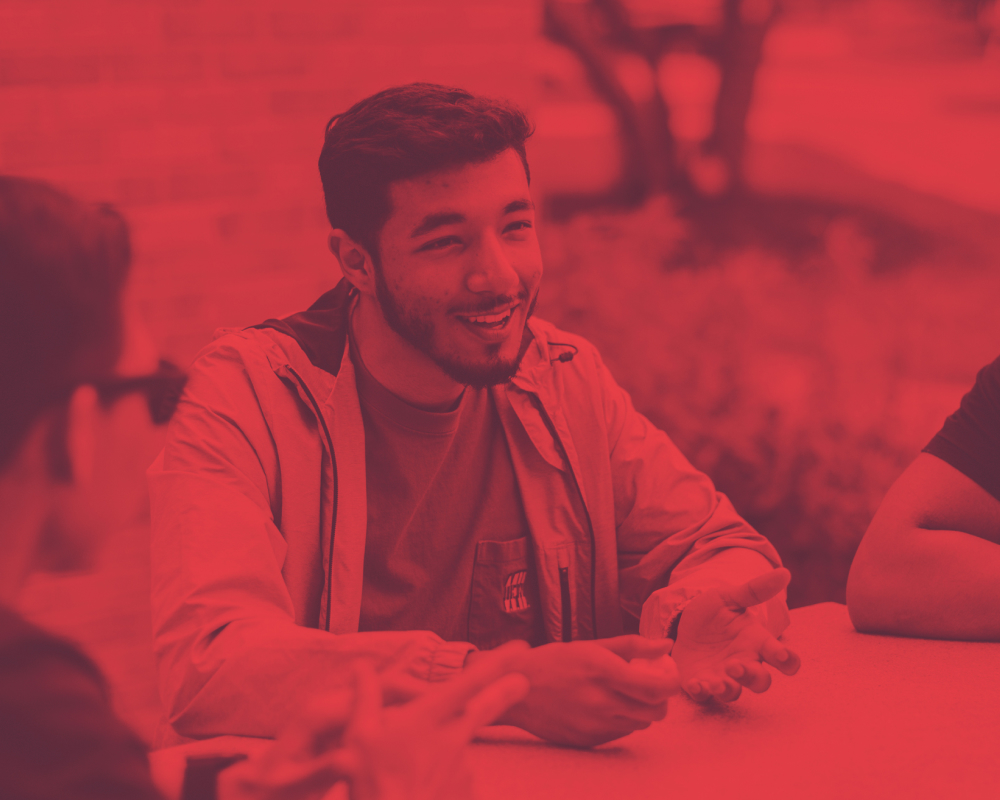North Central News
Latinx and Hispanic Heritage Month celebrates culture and unites students
Nov 17, 2022
North Central College students got the opportunity to learn new cultural practices and embrace one another’s traditions during Latinx and Hispanic Heritage Month from September 15 to October 15.
Students, faculty and staff alike commemorated the month with a series of events dedicated to exploring Latinx and Hispanic practices from a number of perspectives: social, cultural and historical.
Meyani Montano, assistant director of multicultural affairs, said that it was of particular importance to provide students with a diverse range of experiences, so she helped form a committee of student leaders and faculty to collect ideas and plan programming, starting with the Latinx Student Association (LSA).
“I reached out (to) them individually to see what their visions were for the month,” Montano said. “Then we … came together and I established a bare bones outline with one to three events per area—two faculty events, two (student) organization events, two or three cultural events. We wanted to keep it a little more equitable.”
The committee included the Office of Multicultural Affairs, student organizations LSA, the Society of Hispanic Engineers (SHPE), Fusión Española and La Malinche, and faculty members Dr. Patricia Bayona, Dr. Marco Martinez and Dr. Jelena Sanchez. The array of events they came up with ran the gamut from a worship service to a paella tasting, with professional development, Cuban coffee, crafting, historical discussions and music and dancing in between.
“Sometimes students want more of an interactive thing they can do to experience culture,” Montano said. “(It’s) one thing to be told, ‘This is culture and this is what it is.’ It's another to be immersed in that and be a part of it.”
Montano expressed how the student-designed activities gave them the chance to share parts of themselves with others through social interactions and rituals. That was important because cultural identity is distinct to each person, and we create heritage by sharing experiences and evolving our practices over time.
“I want to see students’ creativity and (how they) see through their lens,” she said. “That’s what culture is, right? You take pieces of different things—especially Latinos. With colonization (of) indigenous people there's so much rich culture that is our culture. And so students making it (their) own is something I'm really excited to see.”
While the month was designed to be enjoyable and encourage participants to try new things, it was important that it educate students from both contemporary and historical perspectives. Students enjoyed a trip to Chicago’s Humboldt Park neighborhood to learn about the Puerto Rican population living there, as well as a program in Spanish from Sanchez about Hispanic contributions to the history and development of the United States.
Even more than learning about history and contemporary society, Montano wanted students to end this month feeling like they are not alone—that they have allies, resources and people who understand them on campus. “I don’t really know … who my fellow Latinos are (on campus),” Montano admitted. “I'm sure students feel the same way. I would love to create a space where any multicultural student, no matter if they're queer or if they’re a person of color, no matter what their identity is, that they have a network of people to go to for different things.”
Montano said faculty and staff are going a long way towards helping make that ambition a reality, and Latinx and Hispanic Heritage Month is a good of example of the simplest way how. “I think one thing is simply showing up,” she said. “I think a lot of times what gives students that perspective—that their faculty are just their professors—is that they don't see them outside the classroom.
“We’re out on … campus. We have different events going on in different halls on campus—not just in (Harold & Eva White Activities Center)—(and) a lot of times we're out on Jefferson Lawn. Just showing up and being in those spaces alongside students gives them that feeling like (faculty and staff) care about these things, too.”
